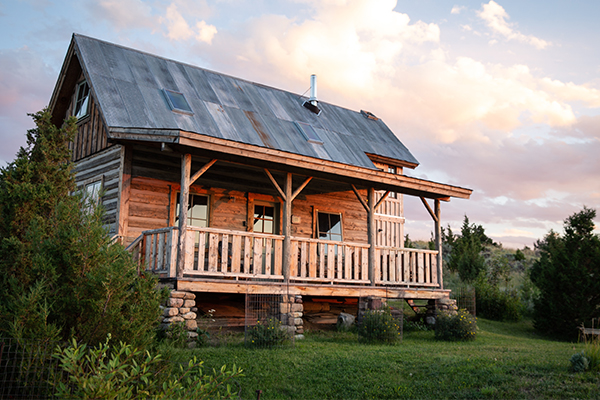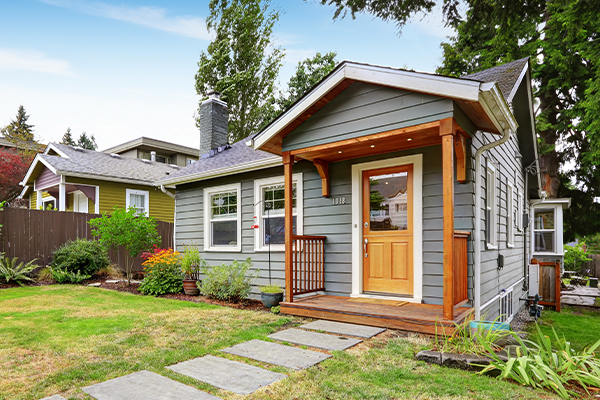Minnesota First-Time Home Buyer Programs and grants of 2022

Key Takeaways:
- First-time home buyers in Minnesota can a get fixed, low interest rate mortgage with as little as 3% down payment.
- Help is available to cover down payments and closing costs, in the form of a low interest rate loan which may not require monthly payments.
- Dakota County also offers a special first-time buyer assistance program for homes purchased within county limits.
If you’re looking to purchase your first home in Minnesota, we have good news: First-time buyers can get major financial assistance, thanks to special state and local government programs! Here’s what you need to know:
The Minnesota Housing Start Up Loan

As a first time home buyer in Minnesota, you’ll want to start by taking a look at the Minnesota Housing Agency’s Start Up Loan program. The Start Up Loan is the primary assistance program offered to first-time homebuyers in the state, so it’s worth spending some time understanding who the program is intended to help, what it offers, and what you’ll need to qualify for it.
What is it? The Start Up Loan program is a loan package that gives borrowers fixed, low interest rate mortgage loans with as little as 3% down payment. Even that 3% can be covered (along with your closing costs) via down payment assistance (DPA) and closing cost assistance. This assistance comes in the form of a second loan (for up to $17,000) which you pay over 10 years at the same low interest rate as your mortgage. (To learn more, skip to the section on Down Payment and Closing Cost Assistance.)
Who is it for? The Start Up Loan program is intended for first-time homebuyers. For the purposes of the program, a “first-time homebuyer” is anyone who hasn’t owned or purchased a home within the last three years. If you’ve owned a home before but not in the last three years, you’ll qualify for the program!
Here are some quick facts about what it takes to qualify for the Start Up Loan Program:
- You must be 18 or older.
- You must be a first-time homebuyer (no homeownership within the last three years).
- You must intend to use the home as your primary residence.
- You must occupy the home within 60 days of closing the loan.
- At least one borrower must complete an approved homebuyer education program before the close of escrow.
- You must meet the credit score and debt-to-income requirements for the loan product you’ve chosen.
- You must have a minimum credit score of 640.
- All borrowers must have an annual combined income below the Income Limits published by Minnesota Housing.
Start Up Credit Score and Debt-to-Income (DTI) Thresholds

The Minnesota Start Up loan package can be a great option for the MN first time home buyer who doesn’t have a top-tier credit score. While this package is intended to lower the barriers to homeownership, you will still need a credit score and debt-to-income ratio that meets the minimum qualifications.
Under the Start Up program, the credit score and DTI requirements are tied to the underlying loan package, so they vary depending on which loan package you choose to go with. This matrix provided by Minnesota Housing has these requirements broken down by each loan package.
Let’s take a look at a few of the more common loan packages to see what type of credit score and DTI requirements you might expect.
FHA Loan
- 650 minimum FICO score with a maximum DTI or 45%.
- 660 minimum FICO score with a maximum DTI of 50%.
Fannie Mae HFA Preferred
- 640 minimum FICO score and 50% maximum DTI.
Freddie Mac HFA Advantage
- 640 minimum FICO score and 50% maximum DTI.
Understanding Debt-to-Income Ratios
If you aren’t sure whether your debt-to-income ratio qualifies for these first-time homebuyer programs in Minnesota, take a moment to calculate it yourself. Because most lenders use it, your DTI is a very important factor in whether you will qualify for a home loan. Individuals with a lower debt-to-income are viewed by lenders as less risky, while individuals with a higher debt-to-income ratio are viewed as riskier.
To find your debt-to-income ratio, follow these easy steps:
- Add up all of your monthly recurring debt expenses, such as your rent or mortgage, student loans, auto loans, or credit card payments.
- Divide that number by your gross monthly income (your income before taxes).
- The result is your DTI, in the form of a percentage.
Here’s an example:
- An individual’s total monthly debt payments come to $2,000 per month.
- Their gross income before taxes is $7,000 per month.
- Their DTI is 29%.
A lower DTI is better because it shows that your recurring debt requires less of your monthly income. If you’re interested in a Start Up Loan, carrying a debt-to-income ratio of 45% or lower is ideal.
Start Up Loan Income Limits
Let’s take a brief moment to review the income limits for the Minnesota Start Up Loan program, since these can have a big impact on whether the program is right for you. For example, if you’re a Minneapolis first time home buyer you will want to pay close attention to the income limits in the 11-County Twin Cities Metro area to see if you qualify.
For Households of 1-2 People:
- If the home is in the 11-County Twin Cities Metro Area the maximum household income is $103,400.
- If the home is in the Dodge and Olmstead Counties, the maximum household income is $101,200.
- For all other counties across the state, the maximum household income is $91,800.
For Households of 3+ People:
- For homes in the 11-County Twin Cities Metro Area, the maximum income for 3+ person households is $118,900.
- For homes in Dodge and Olmsted Counties with 3+ people in the household, the maximum income is $116,300.
- For all other counties across the state, the maximum income is $105,500.
Down Payment and Closing Cost Assistance
Many first-time homebuyers struggle to come up with the cash necessary for a down payment and closing costs. Down payments vary, with some conventional loans requiring up to 20%. (In other words, you’d owe $40K upfront for a $200K home.) More commonly, first-time homebuyers will use loans that require a much lower percentage of the purchase price upfront, such as 3% or 5%. But even in these scenarios, the dream of homeownership can seem far away if you don’t have the cash in hand.
Fortunately, the Minnesota Start Up Loan program can help you secure a loan for up to $17,000 to cover your down payment and closing costs. In fact, there are two different loan options for Down Payment Assistance – the Deferred Payment Loan and Monthly Payment Loan program. Here’s what you should know about each:
The Monthly Payment Loan can be used for up to 5% of the purchase price of the home, or $5,000, whichever is the greater amount. The total amount available under the program is $17,000. The loan term is 10 years, and the loan has monthly payments. There are no post-closing liquid asset limits, and your interest rate is the same as your first mortgage.
The Deferred Payment Loan can be used for up to 3% of the purchase price of the home, or $3,000, whichever is the greater amount. The total amount available under the program is $10,000. The loan term length is the same as your first mortgage, and the loan carries no interest. The Deferred Payment Loan has no monthly payments until your first mortgage is paid off. However, the Deferred Payment Loan has defined income limits that you must be aware of to take advantage of it.
Dakota County First Time Homebuyer Program
If you’re a Dakota county first time home buyer you’ll have an additional pathway to becoming a homeowner through the Dakota County First Time Home Buyer program. Here are some key features of this program:
- Access to down payment and closing cost assistance through a second mortgage loan. This loan has 0% interest, and monthly payments are deferred until the first mortgage is paid off or the home is sold. Borrowers must contribute a minimum of $1,000 towards the purchase price of the home to be eligible.
- Fixed Interest Rates. With specific 30-year loan packages, first-time buyers in the program get access to fixed-rate mortgages. These rates are subject to change. Current rates for FHA / VA loans are 2.75%. Rates for Conventional HFA Preferred loans with 80% area median income (AMI) and below are 3.25%. Individuals above 80% AMI have rates of 3.625%.
- Mortgage Credit Certificate (MCC). If you use this program you may be eligible to claim an MCC, which allows you reduce your federal taxes to help offset the cost of homeownership. The more interest you pay on your mortgage, the bigger your tax break.
Here are the basic eligibility requirements for the program:
- A maximum household income of $100,000 for 1-2 person households, or $115,000 for households with 3 or more people.
- A maximum purchase price of $300,000 for 1-2 person households, and a maximum purchase price of $330,100 for households with 3 or more people.
- Buyers must not have owned a home within the last three years (some exceptions for Veterans do apply, so be sure to check the details).
- The purchased home must be used as a primary residence and must be in Dakota County.
- Borrowers must have a minimum credit score of 640.
- All participants must complete a homebuyer education course through an approved vendor.
Final Thoughts
Finding the right home loan can be a challenging process, so try to be patient! The more you learn, the easier and more streamlined your experience will be.
If you’re considering becoming a homeowner in Minnesota and aren’t sure which loan package is right for you, consider taking part in a state-sponsored educational course geared towards first-time homebuyers. There are some great training resources available that serve as a perfect introduction to homeownership and the programs available in Minnesota for first-time homebuyers.






